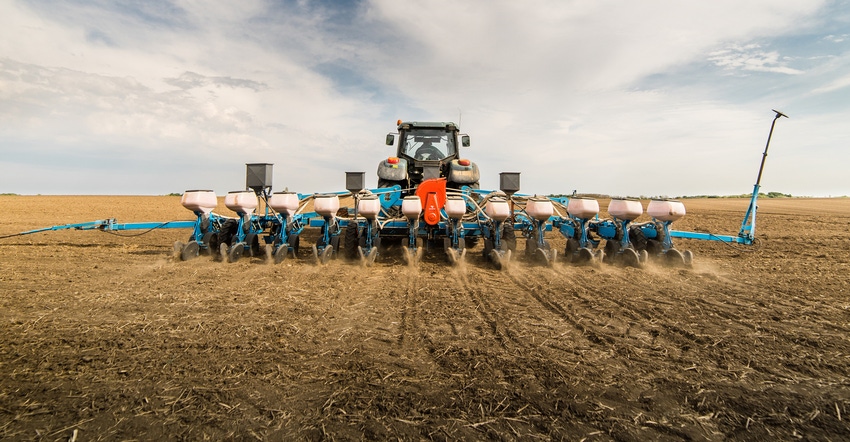
With a fair amount of winter weed growth expected, it’s going to be pretty important — especially in no-till systems — to be diligent about getting spring burndown herbicides on in a timely manner for a clean start, says Christy Sprague, Michigan State University weed Extension specialist.
If applications are delayed, she says weeds become larger and can oftentimes be tougher to control with dense weed populations (or mats) potentially interfering with planting.
Early burndown applications can help provide better control of problematic weeds such as glyphosate-resistant horseweed (marestail) because they are smaller and easier to control.
Tank mixtures of effective herbicides with glyphosate are needed to control small horseweed, Sprague says.
“Early-season weeds can compete — water, nutrients and light — with the emerging crop, so herbicide applications need to be made generally around seven days prior to planting — depending on traits and chemistries,” says Sprague, noting that treatments containing 1 pint per acre of 2,4-D ester need to be applied a minimum of seven days before soybean planting.
“That’s in an ideal world, but some may spray burndown herbicides at or soon after planting — just don’t wait too long, weed competition with emerging crops can reduce yield,” she says, adding that a residual herbicide in the burndown tank mixture can help to provide a cleaner field until a postemergence herbicide application is needed.
Spring burndown herbicide applications also help decrease the winter annual seedbank for future seasons.
But don’t get out there too early. Sprague says to wait until temperatures are at least 50 degrees F to make burndown applications, or you might see slower or reduced activity on weeds.
MSU research over six locations examined burndown applications made at least seven days before planting compared with delayed applications of glyphosate at VC (unifoliate) to V1 (1 trifoliate) and V3 soybeans.
Average soybean yield loss was 8.3 bushels per acre if applications were delayed until VC/V1. Waiting until soybeans were at the V3 growth stage resulted in a 9.2-bushels-per-acre loss.
Compared with controlling weeds before or at planting, waiting to control early-season weeds when soybeans are at the V1 stage (first trifoliate) can reduce yield about 0.5 bushels per acre per day, Sprague notes.
“In today’s market, this could lead to a $38-per-acre reduction in profits at the end of the season,” she says. Some burndown herbicides can be used right up to and after planting.
“For example, if you’re planting EnlistE3 soybeans, they can use the registered Enlist 2,4-D products right up to or shortly after planting,” Sprague says. “And growers planting Xtend or XtendFlex soybeans have the option of using dicamba in their burndown. Both of those products are helpful with any glyphosate-resistance horseweed that may be present at the time of planting. If resistant horseweed is not managed prior to planting, there are no postemergence herbicides for control in Roundup Ready or non-GMO soybean.”
Corn also is susceptible to early-season weed competition. For example, MSU has observed a 7-bushel-per-acre yield loss if weeds were not controlled before reaching 6 inches tall, and a 31-bushel-per-acre yield loss if weeds were not controlled before reaching 12 inches tall.
Preemergence residual herbicides are a good insurance policy by controlling early-emerging weeds in corn and allowing for timely postemergence herbicide applications when weeds are small, says Erin Burns, MSU assistant professor specializing in integrated weed management.
However, if the corn planter gets ahead of the sprayers, there are several residual herbicide options that can be used once corn has emerged.
A listing of these herbicides can be found in Table 1H of the 2021 MSU Weed Control Guide or at canr.msu.edu/weeds.
Growers in the process of making vital herbicide decisions for corn can check out the MSU Economics of Commercial Weed Control programs.
Over the past five years, these studies have found that the median economic return for one-pass preemergence programs is $540 per acre, $650 per acre for one-pass early postemergence programs, and $720 per acre for two-pass pre- followed by postemergence programs.
About the Author(s)
You May Also Like






